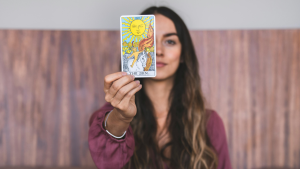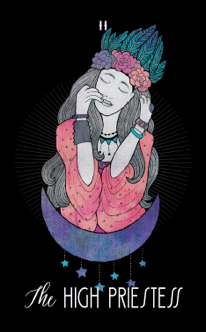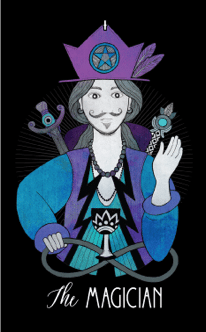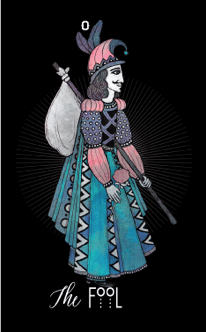Whether you’d like to learn to read the tarot yourself, or you wish to consult a trained advisor to better understand the events and influences in your life, honing in on what kind of reading personally works best is all about finding a comfort level and style that speaks to the authentic you.
Of course, when I say “comfort level,” I’m not implying that every reading, even in the most copacetic style, is always going to supply you with sunny news or positive outcomes. While the old saying goes, “The truth shall set you free,” that which may liberate you might not be so pretty at first blush.
A relationship with the tarot is like any other. You’ll get out what you put into it, and vice versa. If you let it, your bond with the tarot can become like a deep friendship. While casual acquaintances might glad-hand you and pay you compliments no matter what the circumstances, a true friend will always encourage you—but because they care for you, they’ll also sit you down and read you the riot act when the situation warrants it. If you want to become close to the tarot, be ready for some tough love from time to time.
Taking a Traditional Approach to Reading the Tarot
There are many schools of thought on what constitutes a “proper” tarot card reading. Classically trained readers often rely on astrological influences when guiding “the querent” (the person for whom the reading is being given, from the Latin for “one who seeks”) in the selection of the significator card to represent them at the center of a spread.
Once the cards have been shuffled and dealt, traditionalists ascribe a predetermined definition to each card, and decipher its specific meaning and impact depending on the position in which it appears in a given reading. They also read reversals, meaning when a card appears upside-down in a reading, the meaning is reversed as well.
Breaking Tradition: An Intuitive Approach to Reading Tarot
But wherever there is tradition, there are those who seek to break out of its boundaries. Many current practitioners of the tarot take a more abstract, intuitive approach to divine meanings from the cards themselves, as well as the spreads in which they appear. Reading reversals and depending on the zodiac to define a significator take a back seat to seeing a reading in terms of a whole, organic picture. Intuitive readers use feelings and insights to guide them, and listen to messages rather than relying on prescribed definitions handed down through the ages.
Is one method “better” or more “authentic” than the other? In my opinion, the answer is “no.” That’s because, as with art and music, the world has evolved and continues to evolve. Renaissance masters are still masters, to be sure, but that doesn’t mean the creative oeuvre of the Impressionists holds any less value as art. As with beauty, a meaningful tarot reading is in the eye of the beholder.
Getting Grounded, Taking Flight
Traditional readers, as you’ve probably guessed, do things pretty much “by the book.” Back when I was learning to read tarot, “the book” most often consulted by beginners was the 1969 release, The Tarot Revealed, by Eden Gray.
Gray has since published several well-regarded follow-up volumes, including The Complete Guide to the Tarot (1982), which is actually available in a Kindle version for all you 21st Century types. Both books focus on interpreting the Rider-Waite tarot, which again, is generally accepted as the most traditional of the tarot decks. While nowadays, there are literally hundreds of books available on tarot in all its myriad forms, I recommend that anyone who wants to delve into the tarot and get the most from the experience should at least get a basic understanding of the cards and their general meanings.
Why? Because having a solid grounding in the classics makes a great departure point for those who do want to “break the rules.” After all, artists like Pablo Picasso and Jackson Pollock didn’t just wake up one day and say, “I’m going to be a Cubist,” or “I feel like tossing a bunch of paint all over a canvas just to see what will happen.” Both of these acclaimed and groundbreaking artists were classically trained. Having a firm foundation in their craft is what ultimately allowed them to move beyond the conventional to take wing with new inspiration.
Don’t be afraid to experiment with several methods of reading, or even mix them up a bit, blending the traditional with the intuitive until you find the right balance. Ultimately, the method of reading you feel most comfortable with will choose you as much as you choose it.
There’s no “right way” or “wrong way” to read the tarot, only the way that’s best for you. Let one of our talented KEEN advisors tune into the inner you to reveal the path for your most authentic reading today.













